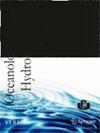Tunisian inland water microflora as a source of phycobiliproteins and biological activity with beneficial effects on human health
IF 1
4区 环境科学与生态学
Q4 OCEANOGRAPHY
引用次数: 0
Abstract
Abstract Ten monoclonal microalgal cultures were obtained from several Tunisian inland water bodies, and their dichloromethane and methanolic extracts were screened for antibacterial, antileishmanial, and antioxidant properties, as well as phycobiliprotein production capacity. Cylindrospermopsis raciborskii has been shown to synthesize high levels of phycocyanin and may be an effective alternative source to other sources used for commercial production of phycocyanin. Chroococcus sp. and Leptolyngbya sp1. exhibited the strongest radical scavenging activity against DPPH (IC50 = 212.15 and 263.91 μg ml−1, respectively), indicating their promising potential for use as new effective and non-toxic antioxidants. Furthermore, Dunaliella sp. showed an interesting antileishmanial activity against the pathogens Leishmania infantum and Leishmania major (IC50 = 151 and 284 μg ml−1, respectively), thus representing a good candidate for use against cutaneous and visceral leishmaniasis in Tunisia, a country endemic to these diseases where thousands of new cases are registered every year. These results suggest that the strains of microalgae featured in this work have the potential to serve as natural alternative, safe and sustainable sources of high value-added products that could be used to improve the final biomass value.突尼斯内陆水域微生物群落是藻胆蛋白的来源和对人类健康有益的生物活性
摘要从突尼斯内陆水体中获得了10种单克隆微藻培养物,并对其二氯甲烷和甲醇提取物的抗菌、抗利什曼原虫和抗氧化性能以及藻胆蛋白的生产能力进行了筛选。已证明种族蓝柱藻能合成高水平的藻蓝蛋白,并且可能是用于商业生产藻蓝蛋白的其他来源的有效替代来源。Chrooccus sp.和Leptolyngbya sp1。对DPPH表现出最强的自由基清除活性(IC50分别为212.15和263.91μg ml−1),表明其作为新的有效无毒抗氧化剂具有广阔的应用前景。此外,杜氏藻(Dunaliella sp.)对病原体婴儿利什曼原虫(Leishmania infantum)和主要利什曼虫(Leishman major)表现出令人感兴趣的抗利什曼病活性(IC50分别为151和284μg ml−1),因此在突尼斯是治疗皮肤和内脏利什曼病的良好候选药物,突尼斯是这些疾病的地方病国家,每年都有数千例新病例登记。这些结果表明,这项工作中的微藻菌株有潜力成为高附加值产品的天然替代、安全和可持续来源,可用于提高最终生物量价值。
本文章由计算机程序翻译,如有差异,请以英文原文为准。
求助全文
约1分钟内获得全文
求助全文
来源期刊
CiteScore
1.70
自引率
11.10%
发文量
8
审稿时长
>12 weeks
期刊介绍:
Oceanological and Hydrobiological Studies is an international journal published by the Institute of Oceanography, University of Gdańsk in Poland. The journal has 4 issues per year and contains papers on all aspects of the marine environment and hydrobiology. All manuscripts are reviewed by editors and independent experts. Based on the referees'' recommendations, the Editor will make a decision on whether to accept a contribution. All articles are published in English. The journal is open to all matters concerning the water environment, thus providing the readers with a wide spectrum of topics in every issue.

 求助内容:
求助内容: 应助结果提醒方式:
应助结果提醒方式:


